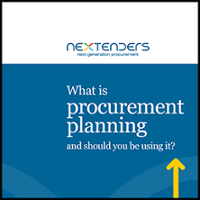 Running individual purchasing events via eTendering reduces the cycle time and increases the efficiency of the buying process. If your organisation is more complex or you have similar items being procured by multiple departments, it might be time to add procurement planning tools and techniques to your platform.
Running individual purchasing events via eTendering reduces the cycle time and increases the efficiency of the buying process. If your organisation is more complex or you have similar items being procured by multiple departments, it might be time to add procurement planning tools and techniques to your platform.
What is procurement planning?
Procurement planning simply means the process of planning procurement activity over time – typically a 12-month period. Planning begins with, and is built around, a budget. A total budget is generally split into departmental or divisional budgets which are then subdivided by commissioning unit, project or work stream.
What does it do?
The plan describes what will happen, and when and how it will happen, over the course of the upcoming period. The plan enables the procurement team to get visibility of procurement intentions and acts as a basis for coordinating across teams, departments and organisations.
- Specify and document the goods, works and services to be procured
- Record the estimated costs within each project or programme
- Set timelines, milestones, budgets and target completion dates for each project, providing a basis for tracking progress
- Set up workflows and approval pathways which determine who needs to sign-off which activity
- Schedule and sequence events such as tender releases and auctions so that activities happen in a logical order and all involved can see what needs to happen and when
- Delegate activity to the appropriate level in the organisation or to third-parties, while at the same time providing overall management visibility on the whole plan
- Control the procurement methods used – whether domestic bidding, expressions of interest or international bidding
- Enter comments onto the system to record changes, feedback or recommendations
- Create a link between overall procurement activity and every individual tender
- Manage the supplier base, specifying an approved supplier list as required
- Share elements of the plan with the bidding community
- Generate reports from the system – progress and cycle times, performance versus budget and spend by supplier, for example
- Know that when plans are updated or adjusted everyone involved has access to the latest plan
- Share plan details with appropriate stakeholders and get their sign off
- Record all activity to ensure compliance and help write next year’s plan

